This article will go over some basic smart home automation features and answer some questions about intelligent home automation.
And if you’ve always wondered what you can do with smart devices, we’ll go over some practical applications.
So, read on to find out more about home automation.
What is home automation, and how does it work?
These days, you can add home automation to many daily tasks. These devices integrate using Wi-Fi to simplify functions around your home. Remotely turn lights on or off, adjust your home’s temperature or speak directly through your doorbell to someone on your porch.
According to Coldwell Banker and CNET, a smart home must have at least three smart devices, and at least one of these should be for security or climate control. Not only can these innovative features make your daily tasks more manageable, but they can also save you energy consumption while saving you money.
I’m just starting with smart home devices… What should I get?
Adding smart touches to your home can be a fun and rewarding experience. But with so many devices out there, it may be hard to decide which ones you should choose. We’ve broken down a couple of questions you might want to ask yourself when deciding on smart home devices.
What can you add to your home to make it safer?
We recommend starting with safety and security first, such as fire sensors, carbon monoxide detectors, video doorbells and smart locks. Or all of them!
What do you use the most in your home, and is it worth automating?
You should look into devices that will help automate daily tasks or add to your comfort. These items may include smart lights and bulbs or kitchen or other home appliances.
What are the main reasons you want a smart device?
Many people want intelligent devices because they save you money and energy consumption. Smart apps can often learn from your behavior and create a tailored approach.
Do you prefer a device that uses voice assistance?
Not every smart device can recognize a voice, but many can. Consider a smart speaker or smart hub system if this is something high on your “must” list.
Do you want simple smart home tech, or are you willing to take the time to delve into an entire suite of smart devices?
If you’re looking for a quick-fix solution to turning lights off and on, a smart plug or smart bulb is your answer. But if you want to integrate your smart plugs with your home security system or create a more tailored home automation approach, you’ll want to look into multiple devices.
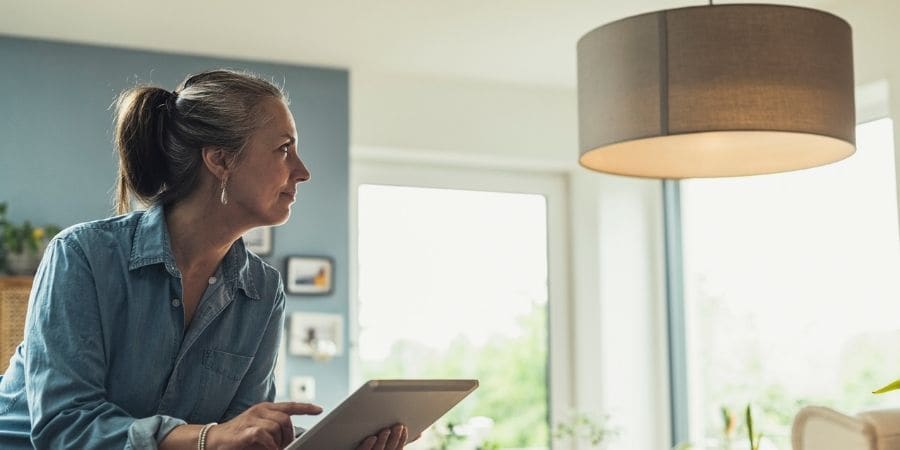

What are the best home automation ideas?
Smart automation is an opportunity to make your daily tasks more manageable. Since so many hubs are on the market, it’s easy to integrate your home’s entire grid to make it into a smart home.
This section will go over some practical usage cases for various smart devices. It’s important to understand that every smart home system will vary in what it can accomplish for you; these are just examples of what is possible.
Energy efficiency and climate control
Water management
Smart faucets and showerheads
Smart sprinklers
Windows and doors
Smart shades or shutters
Smart sensors: glass break sensors, motion sensors
Life and home safety
Smart smoke and carbon monoxide detectors
Smart appliances
Smart speakers
Smart kitchen appliances
Smart washing machines and dryers
Cameras
Energy efficiency and climate control
Energy efficiency is often marked as the primary contributor to what people want out of their smart tech. Smart thermostats, lights and plugs all fall under this category.
Smart thermostat:
Potential homebuyers were asked what smart home components they want pre-installed in a home and 77% listed smart thermostats. Not only can these devices save energy and money on your monthly bills, but it’s worth noting that some energy companies may offer rebates.
Pro-tip: Consider redeeming your rebate earlier in the year, since energy companies may run out of rebate money. Turn it up during the night and turn it down during the day when you’re at work.
Adjust the temperature from the comfort of your bed, your smartphone, tablet or computer.
Warm up your home to the perfect temperature when you’re on the way home.
Keep track of your monthly usage with reports that make it easy to tailor a climate control plan for your specific needs.
Manage humidity levels in the rooms where you keep plants.
Get warnings or alerts if your thermostat senses extreme temperatures.
And some ways you can combine smart thermostats with other smart home features:
Stack multiple commands for your smart thermostat with a connected speaker, “turn off the heating and the TV,” to save time as you’re heading out the door.
Combine with window sensors and get notified if you accidentally leave a window open. Alternatively, if you leave a window open, automatically set your thermostat to turn off after a few minutes.
Sync your smart ceiling fans to a thermostat so they automatically turn on every time you turn the temperature off.
Smart plugs
The best thing about smart plugs is that you can use them to make almost anything that plugs into an outlet into a smart device. It’s worth noting that smart plugs work best with appliances that switch on and off. For example, if you have a kettle with a power switch, you will want to keep that power switch turned on for it to work correctly with a smart plug.
Smart plugs can be purchased in many retailers or online stores and don’t require installation, so they’re an excellent choice for apartments or rentals.
Plug a heated blanket into a smart plug and automatically turn the blanket on as you’re getting ready for bed, so it’s already pre-warmed.
Set your Wi-Fi router up to a smart plug so you can easily restart it if you experience internet problems.
Start heating up a kettle or coffee maker as you’re getting ready so you’ve got hot coffee or tea on your way out of the house.
Do your plants need a bit of extra humidity or moisture? Add a smart plug to a humidifier and schedule when you want the humidifier to turn on and off.
Televisions, microwaves and other large appliances often drain power and energy when they’re plugged in, so a smart power strip or plug makes it easy to completely cut off the power when you’re not using them.
Did you know that leaving a television or radio on may deter a burglar? Add your TV to a smart plug and turn it on and off to make it seem like someone is home.
Smart lights
Use smart bulbs to change the individual colors in your lights, and add to other smart home programs for reminders or scheduled times to turn on and off when you’re on vacation.
Like smart plugs, lights are an excellent option for renters.
Remotely switch lights on and off or create a light schedule when you’re on vacation to make it seem like you’re still home.
Create an IFTTT rule for your porch lights to turn off after a specific time.
Add a rule to your morning alarm to slowly increase the lights from dim to bright to help you wake up more naturally.
Set different colors for different alarms. For example, set your lights to turn green before a scheduled ballet class or blue when you go to your kickboxing class.
Set a specific schedule for a nightlight to turn on and off.
How can you combine smart lights with other innovative home features?
All your lights in the home automatically turn off when you arm your security system and leave.
Sync a motion sensor and smart light together so the lights automatically turn on when someone walks into the bathroom at night and then the lights turn off after five minutes without motion.
Sync certain lights together. For example, every time you turn on your porch light, the entryway lights also switch on.
If a room doesn’t sense movement for a certain amount of time, program your lights to turn off automatically.
Whenever your attic light is turned on, the electric stairs automatically lower down.
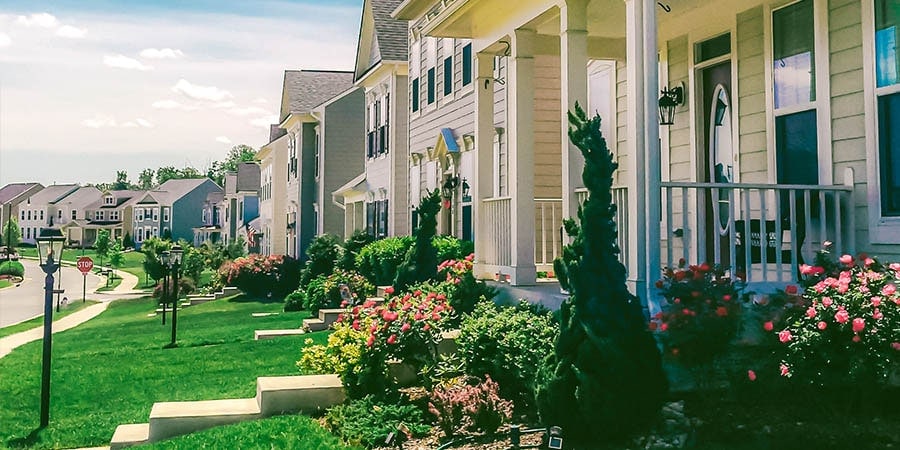

Water Management
Cut down on your monthly water bill using smart tech designed to conserve and moderate your water usage in the home and yard with smart sprinklers, faucets or even showerheads.
Smart faucets and showerheads:
Internal thermometers allow you to control and adjust your faucets or showers to the perfect temperature. At the same time, sensors or voice-controlled features can turn the water on and off for hands-free maneuvering.
These smart water-controlling devices help keep an eye on your water patterns and alert you if it seems like you’re consuming too much water.
Touchless or voice-activated faucets make it easy to wash dirty hands without touching the handle.
Program a smart faucet to the perfect temperature to activate yeast for bread-baking.
Accurately measure different amounts of water without a measuring cup.
A major advantage of a smart showerhead is that you can control the temperature and the water pressure without ever having to get into the shower.
Smart sprinklers
Smart sprinklers can help water your plants or lawn while still conserving water. And after using the system for a few weeks, they usually learn your watering habits and can adjust automatically.
Set your sprinkler system to turn off when it’s supposed to rain or add a few minutes of extra watering time when the day is scorching.
Many sprinkler systems include advanced sensors that learn your plant’s watering needs after a few weeks and automatically adjust the water for you.
Modify your watering schedule based on local restrictions or conservation mandates.
Set an automatic watering schedule, even when you’re out of town.
Are your neighbors constantly walking on your grass? Pair your sprinklers with motion detectors to go off any time there’s movement on your lawn.
Smart flood sensors or detectors
Flood leak sensors can sense water leaks and send you a notification. Some water leak detection systems can even turn your water off if it senses leaks. These sensors are a good option for your basement, garage or attic, or underneath any sink.
Add a sensor behind your toilet or underneath the kitchen sink and get a notification sent to your phone if there’s a leak.
Gather real-time information about your water, including the water pressure, temperature or how the water is flowing, then receive alerts when these stats change.
If your water sensor monitors the weather or temperature patterns, receive alerts when the temperature nears freezing temps.
Some flood detection systems can create usage reports anywhere you’ve added a water sensor and let you know how much water each one is using.
Set your system to automatically turn off the water if there’s a sudden increase in water flow.
Read more about flood leak detectors here: Your Guide to Flood Leak Detectors, Plus Flood Safety Tips
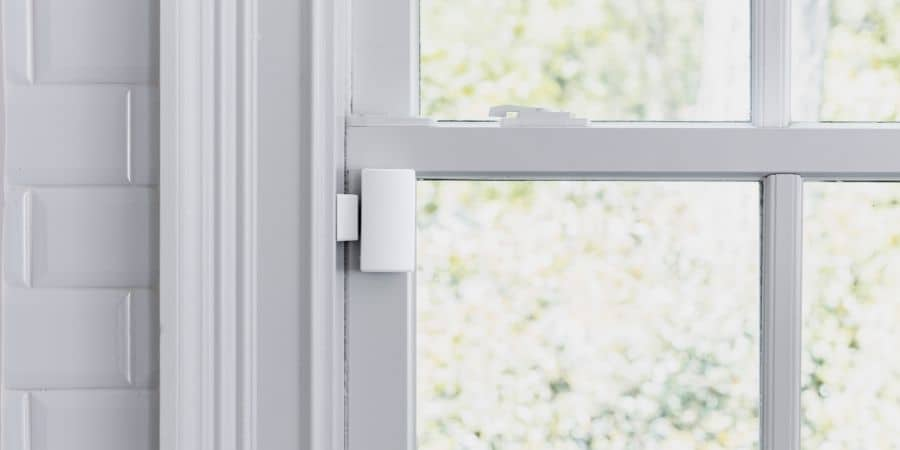

Windows and doors
Energy is lost through windows, but smart blinds, shades or shutters can help trap heat indoors or keep it from coming in during hot summer days.
Smart shades or blinds
These shades and shutters can use data to help you plan when your blinds should open or close based on the weather, indoor temperature, time of day and shutter or open accordingly. Some blinds or shades may have additional thermal insulation to help trap heat in your home.
Automatically close your shutters or blinds if it’s going to rain.
Pair with your smart lights to automatically dim or turn off when you open the blinds.
Close your blinds with a verbal cue when you’re about to watch a movie.
Put your shutters or shades on a schedule and make your home look occupied when you’re on vacation.
Keep your plants happy and healthy by programming smart blinds to open for several hours every day.
Smart locks
These locks make it easy to lock and unlock your door from anywhere and are an excellent choice for adding more layers of security to your home, especially when used with other security cameras.
Smart locks are easy to program, so you can create specific keycodes for certain family members or change the code periodically for added safety.
Unlock the door and allow personnel into your home in an emergency, like your landlord or firefighters.
Remotely allow a guest, child or babysitter inside your home, even if you’re not there.
Receive alerts when your kids are home from school so you know they’re safe and sound.
Many smart locks feature an illuminated keypad, so you no longer have to worry about fumbling around with keys in the dark.
Use your smart lock with a doorbell video camera or indoor camera and allow a delivery driver into your home to deliver an important package.
Read more about smart locks: What is a Smart Lock and How Does it Work?
Smart sensors
These sensors can be added to various appliances or areas of your home and sync up with your smart hub to automate or improve multiple home functions. Smart motion sensors are also an excellent addition to a home security system since they can often be linked with your hub to sound an alarm or notify you of other conditions, from motion to breaking glass.
Set up motion sensors with various lights throughout your home and add rules to turn them off after a certain amount of time or only turn them on to a certain brightness.
Prone to midnight snacking? Add a rule in your kitchen that turns lights on at 20% anytime the motion sensor is triggered after midnight.
Add sensors and lights to closets to help illuminate clothes and shoes.
Turn off your bathroom fan after running for five minutes by adding a sensor.
Add a sensor to your fridge door so it beeps if the door is open for longer than five minutes.
Want to know if you’ve gotten mail? Add a sensor to your mailbox.
Add a sensor to your child’s bedroom door and get a notification if they are sleepwalking or wandering around the home after midnight.
Read more about motion sensors: A Complete Guide to Motion Sensors: What You Need to Know
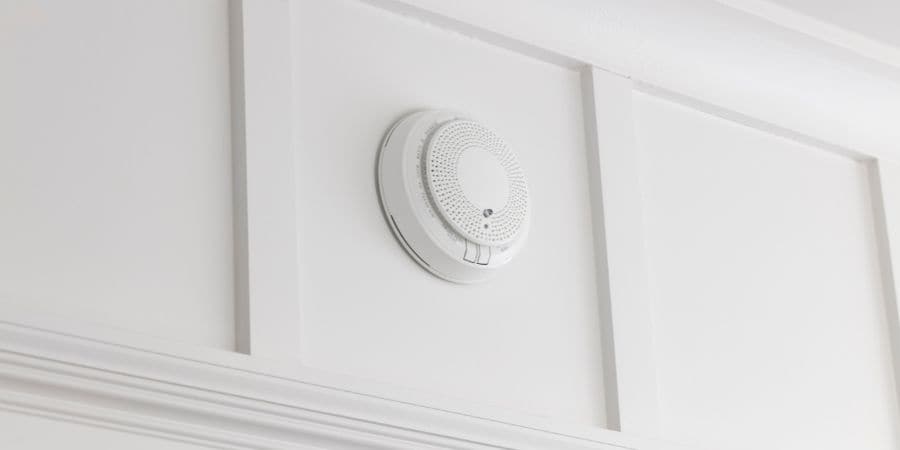

Life and home safety
Add these smart gadgets to your home to help make it a smart home security system. Set a rule with your home security system so if your alarm is tripped, your shutters close and your lights turn on with a siren.
Or if a fire is detected, your HVAC system turns off and stops circulating air, your shutters open to allow you to see inside and your smart locks automatically unlock for any first responders.
Smart carbon monoxide detectors and fire alarms:
Typically, you only know if your fire alarm or CO detector is going off if you happen to be home. But smart fire detectors and CO alarms send alerts directly to your phone. Consider using your smart alarms with other home security features to get a complete picture of what’s happening in your home if a fire does occur.
If your smoke alarm or carbon monoxide detector goes off, every light in your home comes on and the HVAC system turns off.
Some smart smoke alarms know which room a fire is in, so you can tell a firefighter.
Use your smart lock to quickly open the door during an emergency, allowing firefighters or first responders easy access to your home.
Know when your battery is starting to get low with the connected app–no more beeping!
Smart garage door opener:
A smart garage door opener links your garage with Wi-Fi and allows you to open and close your garage from virtually anywhere. If you combine it with other home security cameras, you can see who is coming or going or even allow a delivery driver to drop a package off.
Get notifications if you forget to close your garage door and remotely shut it.
Set your door to open and close at certain times, like when you’re coming home or leaving work.
If you have multiple garage doors, create a rule and combine it with geofencing technology to only open each door for a specific person.
You should always have a carbon monoxide detector installed in your garage. Set your garage opener to work with your CO detector, so it notifies you, then opens the doors if high levels are detected.
Tie your garage opener to your smart lights, so it lights up any time you come home.
Smart appliances
Streamline tasks you do every day with smart appliances for the kitchen and home.
Smart speakers:
Did you know that approximately 35% of the United States has a smart speaker? Smart speakers offer a glimpse into smart home automation.
Set up your smart speakers to send an alert to let you know once the washing machine or dryer is done.
Monitor rainy or snowy conditions and get an automated message if either one occurs, so you know how to dress for the day.
Find out what the weather is like before work every morning so you know how to dress.
Set your smart speakers to alert you if you leave a window, refrigerator door or another door open for more than five minutes.
Repeat an alarm every few minutes until you wake up and leave the bedroom door.
Set sensors on a safe and get a notification when someone tries to open it.
Smart appliances and electronics:
Many smart devices react to simple voice commands. But, you can take your home automation a step further with smart appliances that can do anything from monitoring food while it cooks to weighing out your clothes and washing them for the correct amount of time.
Set your coffee machine to automatically turn on every morning so it’s ready when you wake up.
See what’s in your fridge when you’re at the grocery store to figure out what you need to get for the week.
Sensors make it easy to regulate temperature, moisture and more in your smart oven.
Some smart ovens come with pre-programmed recipes that only need a tap in the app to get started.
Schedule a vacuum robot to clean your home on a specific day when no one is home.
Smart washing machines and dryers
Fill in details about what you want to wash (e.g., type of fabric, how dirty they are, if they are color or white) and your machine will automatically select the best cycle.
See real-time results for energy and water consumption.
Some machines may be able to automatically meter out the proper amount of detergent based on the weight of your clothes.
Security Cameras
A camera can help you keep an eye on your property from the inside, outside or even on the front porch.
Smart video doorbell:
Video doorbells add another layer to your home security and work especially well with an outdoor camera, helping you keep an eye on your front porch even when you’re on vacation or preoccupied within the home.
Connect your doorbell to your speaker system to pause any music playing if the doorbell rings.
Two-way audio makes it easy to talk to a solicitor, package delivery driver or a guest—even if you’re not home.
Have footage of your front porch if a package is snatched that you can give to the police for evidence.
Use a video doorbell with your smart lock to see who is at your door and let in a guest.
Sync your doorbell with your smart lights so that any time someone pushes the button, those lights flicker to let you know someone is at your door.
Automate your porch lights to turn off whenever someone pushes the doorbell.
Create specific rules with your doorbell depending on your work schedule or geofencing. If you’re home and someone pushes the doorbell, receive a push notification or an announcement on your speakers and automatically pause your smart TV. If you’re not home and the doorbell is pushed, receive a notification on your phone and speak to your guest through 2-way audio.
Read more about doorbell cameras: How to Choose the Best Doorbell Camera For Your Home
Indoor security cameras
Indoor security cameras make it easy to monitor what’s happening inside your home. Sometimes, people decide to only get outdoor cameras, but indoor cameras are essential, too.
In the event of a break-in, you’ll be able to see what the thieves took and even have footage you can hand over to the police.
Check on your kids, pets, babysitters, or even an elderly family member with indoor cameras.
Many indoor cameras use AI technology to distinguish between an unwanted intruder and a guest.
Infrared night vision makes it easy to see what’s going on in your home when the lights are turned off.
Outdoor security cameras
View live footage, playback recorded videos and even see what’s going on after dark with infrared night vision outdoor security cameras. These cameras are specifically designed to withstand various weather conditions, from snow to wind. ADT’s cameras even feature a built-in heater that turns on when it gets too cold, so you’ll always have a working camera no matter the weather.
Get notifications when someone comes or goes into your home.
Many outdoor cameras can distinguish between animals, people and other objects, so you’ll only be alerted when people come toward your home.
Two-way audio makes it easy to communicate with package delivery drivers, guests or even solicitors when you’re not home.
In the event of a break-in, you can turn over the camera footage to the authorities.
Pair an outdoor camera with sensors in your home so your indoor lights are triggered to turn on automatically.
Read more about outdoor security cameras: The Best Outdoor Camera Security System
What is IFTTT?
IFTTT means “If This Then That” and refers to a platform that integrates with Google Assistant, Amazon Alexa, Blue by ADT and other apps and services to create applets. These applets help automate various tasks around your home.
IFTTT works through a trigger, query, an optional filter code and an action.
The trigger tells an applet to start. (Someone triggers your motion sensors.)
A query asks a question or delivers
additional data for the trigger. (Once the sensors are triggered, only turn the lights on when it’s dark.)
Filter code adds extra functionality to your applets to make sub-conditions.
An action is the result of a trigger. (Turn on outside lights)
These rules turn on your outside lights only when it’s dark if there is motion from your connected Ring, Nest or Arlo devices.
IFTTT allows you to use standalone sensors and devices to create smart actions—as long as they’re compatible—with anything from thermostats to smart lights. However, a hub streamlines this process, so you can create rules that integrate throughout your home for the best automation experience.
Read more about how Blue by ADT integrates with IFTTT here: If This Then That (IFTT) Integration.
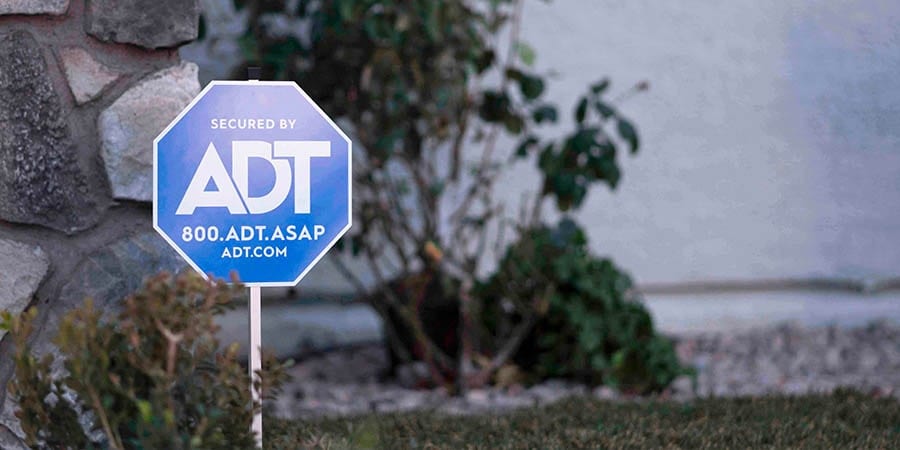

What is Z-Wave technology, and how does it work with smart home automation?
Z-Wave also helps automate your home and can be especially useful when integrated with your home security system. Schedule your lights, locks or thermostat with customized rules or triggers based on schedules that work for you.
These rule components include:
“When this happens,” Add the Trigger
Common triggers include
A specific time of day
Sunrise/sunset
Device action
System armed state
“Under these conditions,” Add the Conditions
Set conditions to include something that only happens:
During a time range
During the daytime or nighttime
Specific day(s) of the week
When your system is armed, disarmed or during an active alarm
“My system should,” or Add Actions
Actions determine what will happen with your rules.
Set your Z-Wave thermostat to lower the temperature every time you arm the system.
When an alarm goes off, your smart lights turn on or off.
Set the garage door to open when you come back home from work.
Automatically lock or unlock your smart locks when your pet sitter comes by to walk your dog.
Read more about Z-Wave here: What is Z-Wave?
Frequently Asked Questions about Home Automation
What is the difference between a smart home and smart automation?
A smart home usually refers to a home that has multiple smart devices and sensors that connect over Wi-Fi to your smartphone or tablet. Home automation is the system’s technology that allows you to run those automated services.
Can I do home automation myself?
What you want to automate in your home is up to you and can be as simple as purchasing a smart thermostat or smart bulbs. If a project ever seems too daunting or requires you to re-wire anything, we recommend consulting an electrician just to be safe.
How much does it cost to automate a house?
If you start with a few simple home automation devices like turning all your bulbs into intelligent bulbs and smart switches, it doesn’t cost more than a few hundred dollars. But as you buy newer, more complicated technology or an entire home automation system, that can increase and cost you several thousands of dollars.
Does Z-Wave need a smart home hub?
A Z-Wave compatible hub is integral to ensuring your smart home automates properly with Z-Wave rules. Z-Wave compatible devices include Blue by ADT,
[1] https://ucr.fbi.gov/crime-in-the-u.s/2019/crime-in-the-u.s.-2019/topic-pages/burglary
[2] https://www.ktvb.com/article/news/crime/we-asked-86-burglars-how-they-broke-into-homes/277-344333696
[3] http://www.jsu.edu/police/docs/Schoolsafety.pdf
Related Articles:


